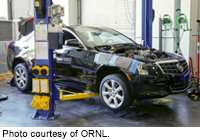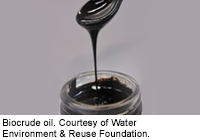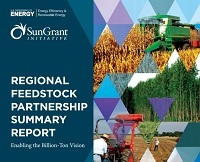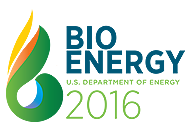November Monthly News Blast: A Cornucopia of Bioenergy Updates
DOE Office of Energy Efficiency and Renewable Energy sent this bulletin at 11/29/2016 04:31 PM EST
 |
||||
 |
||||
|
||||
Results of the Cellulosic Sugar and Lignin Production Capabilities Request for Information
|
|
|||
A Cornucopia of Feedstock Options
Achieving the Best of Both Worlds—Improved Vehicle Performance with Fuel that's Better for the Environment
New BETO-Funded Technology Converts Human Waste into Biofuel
BETO-Funded Study Identifies Infrastructure-Compatible MaterialsA new BETO-funded study by ORNL provides the necessary data to help the fueling infrastructure community produce safe and reliable biofuel production and delivery systems. By evaluating the performance of several key materials used in the design of biofuel production, processing, storage, and transportation systems, scientists were able to identify two materials—silicone and a rubber called styrene butadiene—that are the most compatible and also the most economical. Regional Feedstock Partnership Report Available
Bioenergy 2016 Speaker Presentations Available Online
BioenergizeME UpdateEarlier this month, the BioenergizeME Team hosted a webinar to provide an overview of bioenergy and the 2017 BioenergizeME Infographic Challenge. The recorded webinar is now online! Topics covered include an overview of bioenergy, including its creation and potential uses, and rules and topic areas for the 2017 BioenergizeME Infographic Challenge. You can also check out past webinars that provide an introduction or refresher on bioenergy and how to integrate bioenergy into the classroom. Visit the BioenergizeME Team at the National Science Teachers Association Regional Conference in Columbus, Ohio, Dec. 1–3, at Booth 543, or participate in the session discussing creative methods to explore energy literacy on Dec. 2, 3:30 p.m. to 4:00 p.m. Eastern Time in Franklin Room D. Past and Upcoming Events with BETO Representation
|
||||
|
To view past Monthly News Blasts, visit the BETO Newsletter page. |
||||
|
Update your subscriptions, modify your password or email address, or stop subscriptions at any time on your Subscriber Preferences Page. You will need to use your e-mail address to log in. If you have questions or problems with the subscription service, please contact support@govdelivery.com.
This service is provided to you at no charge by DOE's Office of Energy Efficiency & Renewable Energy (EERE). Visit the website at http://www.eere.energy.gov. |
||||







